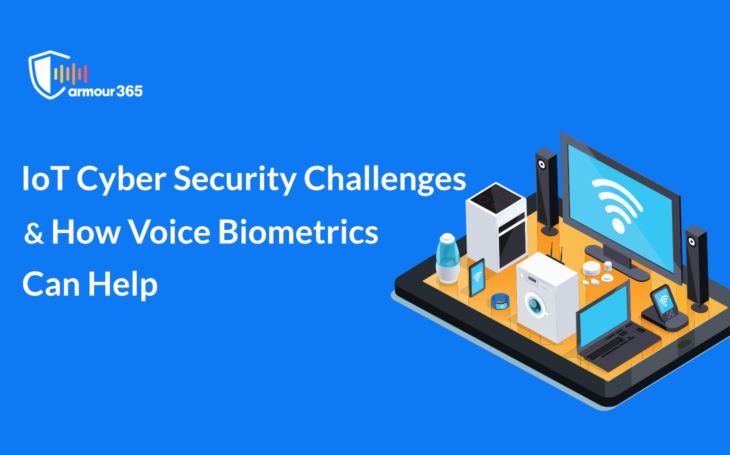
The world is coping with lockdowns and working from home, but cyber terrorists have a field day. Here are a few numbers to show how deep the rot is:
Number of encrypted threats- 10.4 million attacks
Ransomware- 623.3 million attacks
Crypto Jacking- 97.1 million attacks
Intrusion attempts- 5.3 trillion
IoT malware- 60.1 million attacks.
The above statistics account for the attacks in the single year of 2021 alone.
The most significant DDoS attack ever was launched on Dyn, a service provider, with the help of an IoT botnet. It led to a massive portion of the internet going down. Another scary example of an IoT hack is when a team of researchers hijacked a famous SUV brand through a cellular network, increased and reduced the vehicle’s speed in motion, and even veered it off the road.
This article will look at the challenges surrounding the last statistics, that of IoT, and how voice biometrics solves IoT’s cybersecurity challenges.
Let us look at IoT cyber security challenges:
1. Weak default passwords:
Your IoT devices come with default passwords. Organizations don’t bother changing them, and they gain access to these devices by using brute force and dictionary attacks. The Mirai malware is an example of such an attack. It infected IoT devices ranging from routers to video cameras using a list of 61 common hard-coded default usernames and passwords.
To reduce the risks associated with this, organizations should enforce strict password policies so that each device has a unique one.
2. Legacy operating systems:
More often than not, IoT devices are run on legacy operating systems that are not even supported anymore by the manufacturers. Malicious actors can use common vulnerabilities and exposures (CVEs) in the attacks. Organizations should apply intrusion detection capabilities to devices to detect threats and remediate weaknesses.
3. Poor update mechanisms and policies:
Most of the software released by IoT device manufacturers contains unpatched vulnerabilities. Even devices that have updated software are discovered during the passage of their work. Network administrators and IoT users do not apply patches even when updates are released. These devices are vulnerable to attacks.
Network administrators must implement a strong device update policy. The policy should include regular scanning of unpatched systems. Deploy solutions that offer virtual patching of vulnerabilities.
4. Data Privacy:
IoT devices collect vast amounts of data, and if their management is not done correctly, it can create safety concerns. IoT devices are not great at protecting sensitive information because of their inherently poor security system. Sometimes, these devices pass sensitive information without encrypting it and store it without proper protection.
5. Lack of global standards:
As of today, there are no IoT global standards for its cybersecurity. The lack of international regulations puts the onus on IoT manufacturers to adhere to their safety standards. Not all IoT manufacturers put a lot of care in this regard. Therefore, they end up creating security holes in the enterprise networks. The lack of standards also creates difficulty in allowing communications between machine to machine (M2M).
How does voice biometrics solve IoT cybersecurity challenges?
Even though IoT devices have made considerable strides in security, it is still a big challenge. One way to keep IoT devices secure is by using biometric IDs. Biometrics technology uses unique personal characteristics that are not possible for hackers to replicate. RFID badges, keys, and passwords can be stolen or duplicated.
Voice biometrics is one option that is increasingly becoming popular since advances in artificial intelligence speech analysis have made identifying different voices a reliable affair. Devices such as Alexa, Apple’s HomePod, and Google Home support voice recognition to access additional features, including multiple profiles.
Even if seized, voice biometrics cannot be used in the same way as a password or a pin code. In voice biometrics, the speech is converted into a digital model of the person’s vocal attributes. The voice data is of no use to the attackers, and it cannot be used as a vector of attack. It is also not possible to reproduce the speaker’s characteristics. Therefore, voice biometrics makes it incredibly hard for unauthorized personnel to access IoT devices.
If we want to enjoy the IoT revolution, we must build more robust protocols and standards so that there is no compromise on security. Voice biometrics will be a huge enabler when it comes to securing IoT devices.
armour365™’s proprietary voice biometrics solution will be the go-to authentication partner for IoT device manufacturers and users. If you are looking for an AI-based voice biometrics solution, then get in touch with us.




